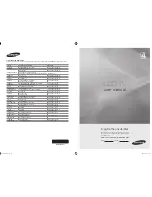
1 - 7
• For testing to VDE 0701 / IEC 65 / BS 415 etc. we recommend that the measurements are carried out using the PAC 500, PAT 1000, PAT 2000,
Metratester 4/5 or suitable equipment. These can be obtained from:
e.g. Seaward Electronic Ltd
e.g. Gossen-Metrawatt GmbH
Bracken Hill, South West Ind Est
Thomas-Mann-Str. 16-20
Peterlee
D-90471 Nürnberg
Co Durham
SR8 2JJ
Telephone: 0191-5863511
Note: Models quoted may be superceded with new models with the passage of time.
• The PAC provides an initial indication of a "pass" or "fail" and is also suitable for mobile (field service) use, and the PAT units are designed for in-
house use and for the maintenance of records and other professional uses and are compatible with most PC systems.
• If the safety of the product is not proven because:
– a repair and full restoration is not physically or economically possible
– or if the user / owner requests that repairs are not to be carried out,
the user / owner must be given a written warning of the risk!
• Observe the conditions given in the "Safety Instructions" section.
Important Advice and Safety Tests relevant to Service Repairs
– Service repairs must be carried out only by qualified personnel.
– Observe the VDE and National Safety Regulations as applicable.
– Operate line / mains powered units via an isolating transformer.
– Connect external aerials via an aerial isolating element.
– After repair, activate all protective circuits put out of operation.
– Before complete re-assembly of the unit restore the wiring to the original condition.
– Wear the protective clothing as required for repairs on picture tubes.
– Discharge the picture tube before dismantling it.
– When handling picture tubes avoid mechanical shocks to the tube (risk of implosion).
Handling of MOS Chip Components
Circuits containing MOS devices require special and careful handling to protect them from damage by static charges. Static charges can build up
on all highly insulated plastics, can be transferred to persons wearing clothes and shoes made from synthetic materials and from them to the MOS
devices.
Protection circuits in the inputs and outputs of MOS devices provide only a limited degree of protection and this is due to their reaction time.
Please observe the following instructions to protect these components from damage by static charges:
1. Retain MOS components in their conductive packages until they are required for use. MOS components must never be stored or transported in
Styroper materials or in plastic magazines.
2. Personnel handling MOS components must first discharge any electrostatic charge on their body or clothing by touching a grounded object.
3. Handle the MOS device by the body and do not touch the terminals / pins.
4. Use earthed instruments only for testing and processing purposes.
5. Removal of, or making contact with, MOS ICs fitted into sockets must only be carried out with the operating voltage disconnected.
6. Circuits containing p-channel MOS components must not be connected to positive voltages (with reference to the substrate connection VSS).
MOS Soldering Instructions
• Use mains-isolated low-voltage soldering irons only.
• Maximum soldering period is 5 sec with a soldering iron temperature of 300
°
C to 400
°
C.








































